Cyan is one of the lesser-known colors on the color wheel. Sitting somewhere between green and blue, cyan is one of the best complementary colors to red.
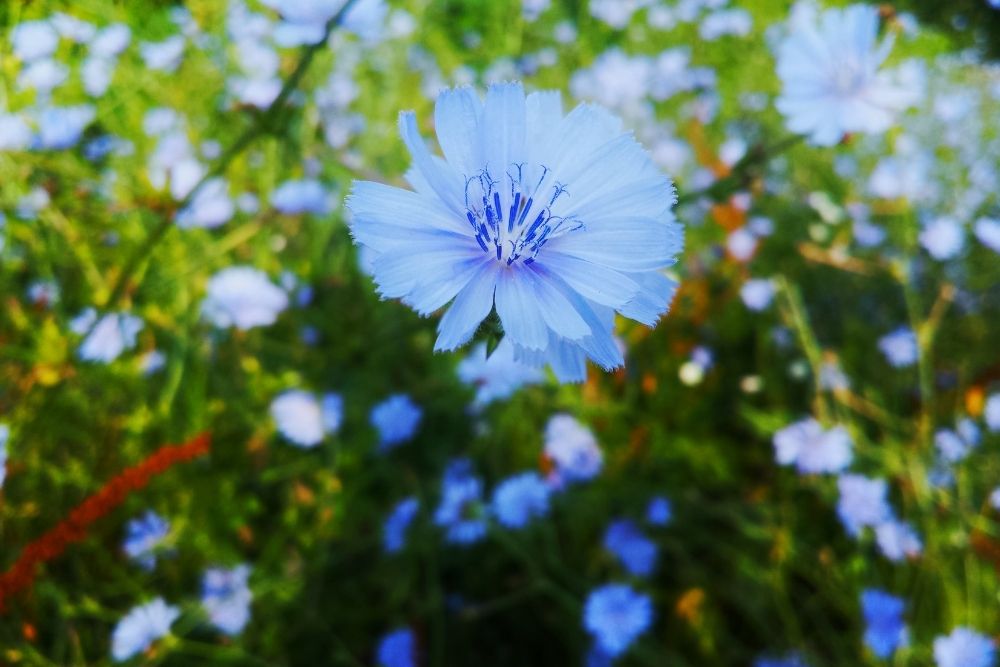
Due to the color’s rarity, however, it’s hard to find flower species that accurately represent the color in a garden.
While cyan-colored flowers might be hard to come by, it doesn’t mean they don’t exist.
There is a myriad of blue flower species, with some being natural and others a deliberate hybridization of other species to achieve a certain color.
If you’re looking to expand the rainbow of colors in your garden, or even if you’re simply curious about the world of flowers, here is our guide to cyan flowers!
1. Lungwort (Pulmonaria)
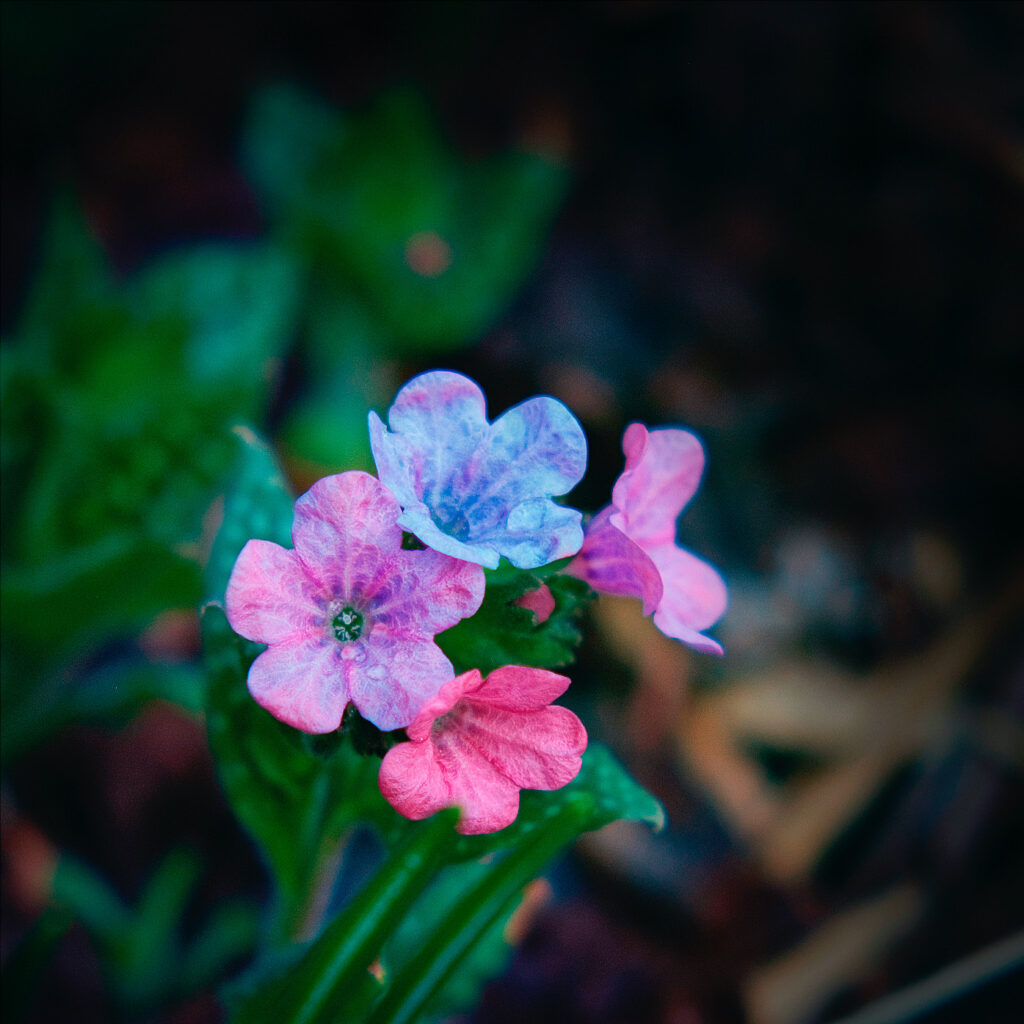
With between 10 and 18 species, lungwort is a fairly small genus of flowering plants native to western Asia and Europe.
These evergreen or herbaceous perennials exhibit clumps of green foliage with open cup-shaped blue or violet flowers.
To achieve the best cyan-like color, look for a lungwort variety with the greenest leaves.
Lungwort flowers like to grow in shaded areas with moist, well-draining soil. As they bloom in spring, they help to provide a splash of color to a garden as it leaves the dormancy winter period.
2. Sweet Pea (Lathyrus Sativus)
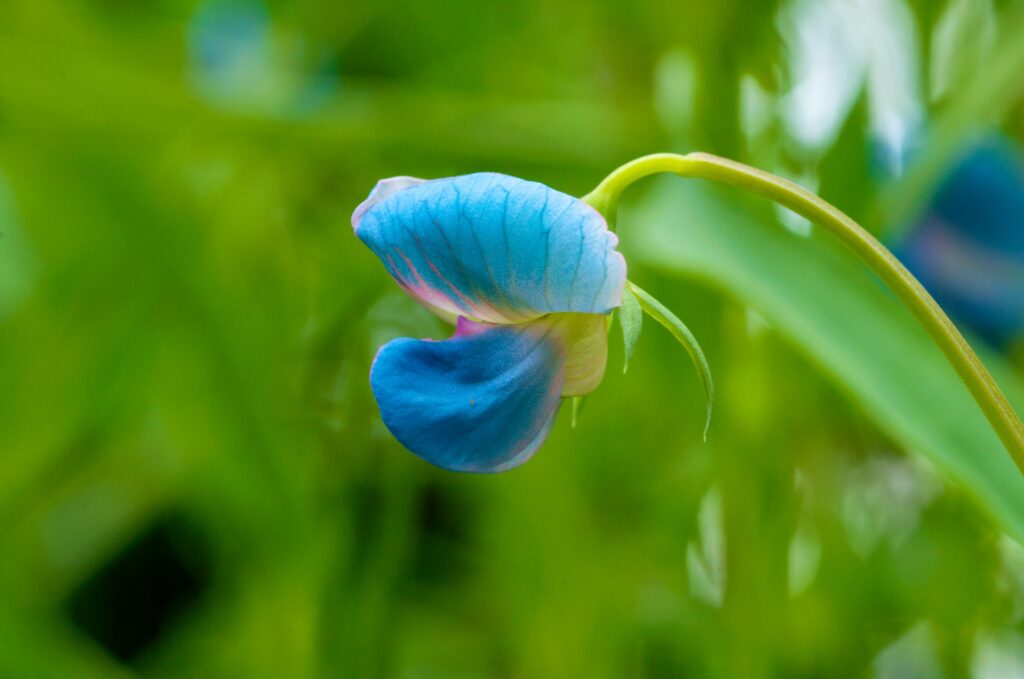
While sweet peas are typically used for human and animal consumption in parts of Asia and Africa, the delicate blue flowers are also planted in gardens across the world for their delicate fragrance.
Sweet peas come in a variety of colors, but the dark cyan-like blue shade is most popular as it stands out against other blue flowers.
Blue sweet peas work well as a contrasting flower or in a hanging basket.
They can be hard to grow due to tough germination, but once their needs are met, they will become quite hardy. They prefer full sun and well-drained, moist soil.
3. Poor Man’s Weather Glass (Anagallis Arvensis)
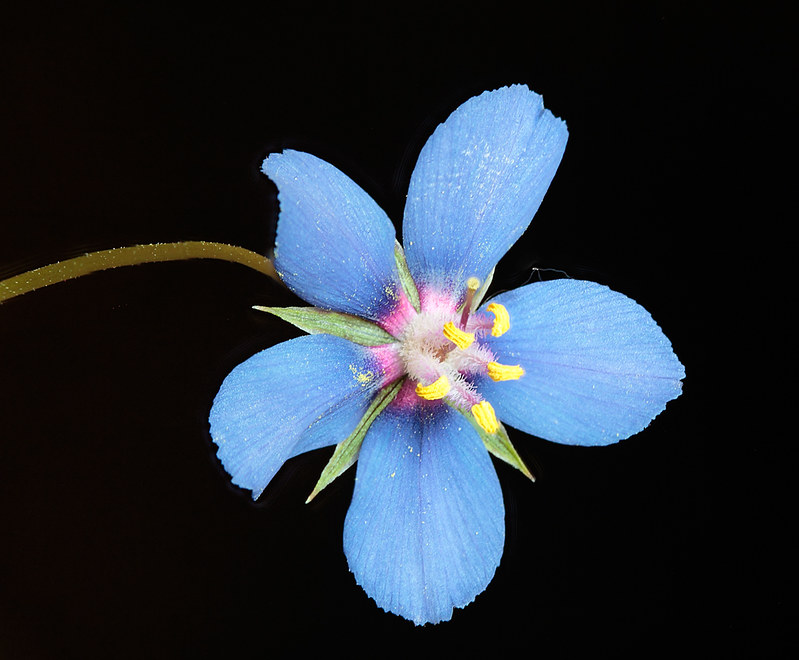
The poor man’s weather glass belongs to the primrose family and is native to Europe and parts of Africa. These are low-growing annual plants that produce dark blue, scarlet, or often pink flowers.
Interestingly, these flowers are known for predicting the weather – the flowers will open in sunny weather and close up when it’s cloudy.
It is believed that this is the plant’s form of self-protection against rain.
Poor man’s weather glass flowers like to settle in one spot and don’t transplant well. They like partial shade and well-drained soil.
4. Desert Bluebells (Phacelia Campanularia)

Also known as the California bluebell, the desert bluebell is a California-native flower that, sadly, is a vulnerable species.
Desert bluebells are known for producing a loose cluster of dark blue flowers that appear cyan blue thanks to the dark green leaves underneath.
As the name suggests, these flowers are typically bell-shaped.
As they are native to California, desert bluebells grow best in gravelly, dry, and rocky areas, which is why they are commonly grown in rock gardens and xeriscaping purposes.
5. Birdbill Dayflower (Commelina Dianthifolia)
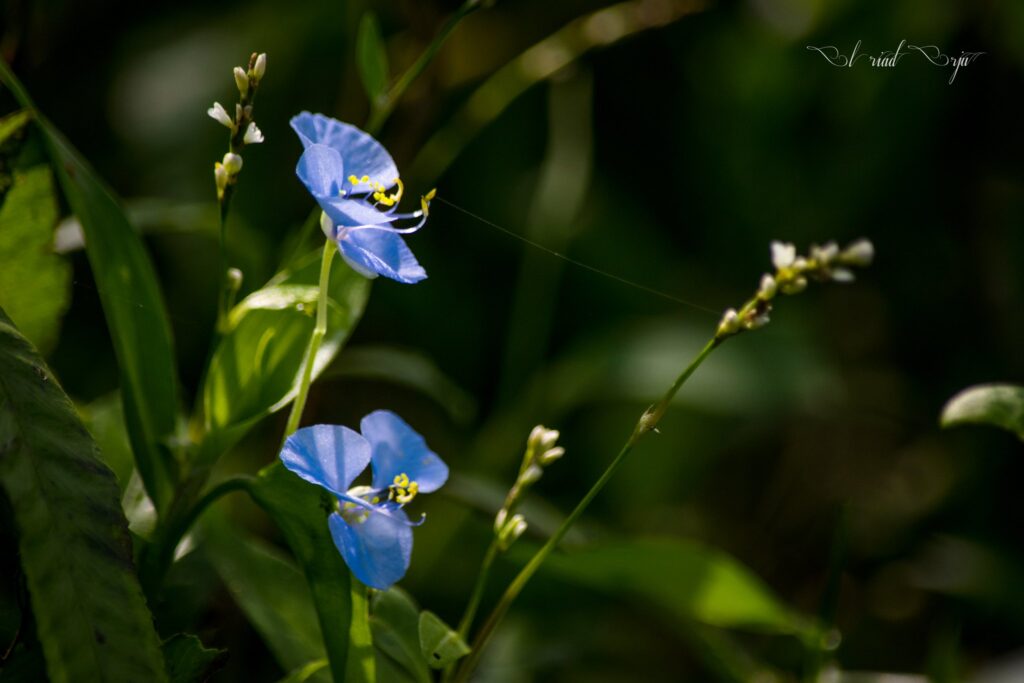
Native to the southwestern United States, the birdbill dayflower is a perennial herb exhibiting intense blue flowers.
Alongside the three blue petals of each flower are small yellow stamens that create a stark contrast. They are typically found growing in woodlands, meadows, and roadsides.
Birdbill dayflowers are fairly easy to grow and maintain thanks to their resilience in their natural habitats. They typically prefer partially shaded areas with partial sun and moist, well-drained soil.
6. Blue Lupine (Lupinus Perennis)
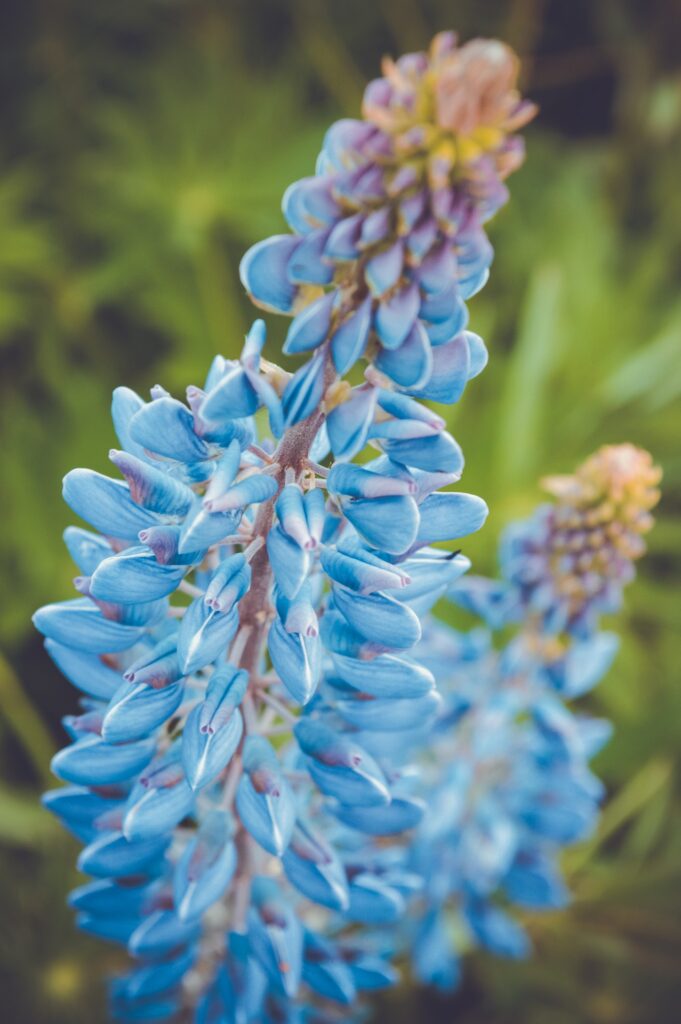
Lupines are a widespread flowering plant appearing across North America, often nicknamed old maid’s bonnets or sundial lupine.
These flowers come in a variety of colors, but the deep blue variety is particularly beautiful. Paired against some dark green foliage of other plants, you’ve got yourself a cyan-colored lupine.
Lupine flowers grow on tall stems, making them ideal for providing some dimension and height to a flower bed. They prefer to grow in full sun with well-drained soil.
7. Cambridge Blue Lobelia (Lobelia Erinus)
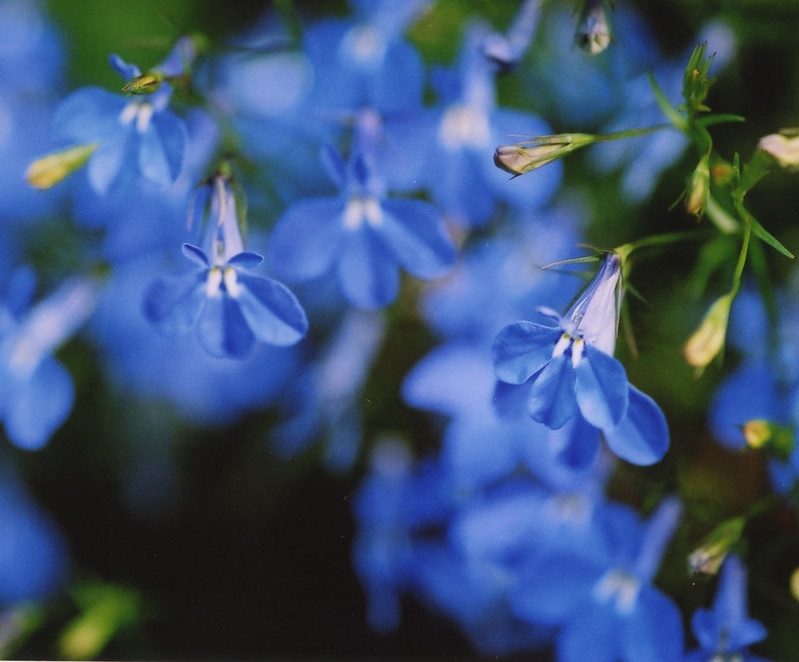
Also known as garden lobelia or trailing lobelia, the Cambridge blue lobelia is a flowering plant native to southern Africa.
These herbaceous annuals generally bloom during summer before wilting in the first frost.
They are low-growers with oval basal leaves and blue or violet flowers, though the Cambridge blue variety is best for those wanting cyan flowers.
RELATED: 18 Beautiful True Blue Flowers (Including Pictures)
These compact flowers can be grown and transplanted in most environments, as long as they receive full sunlight and are grown in moist, well-drained soil.
8. Columbine (Aquilegia)
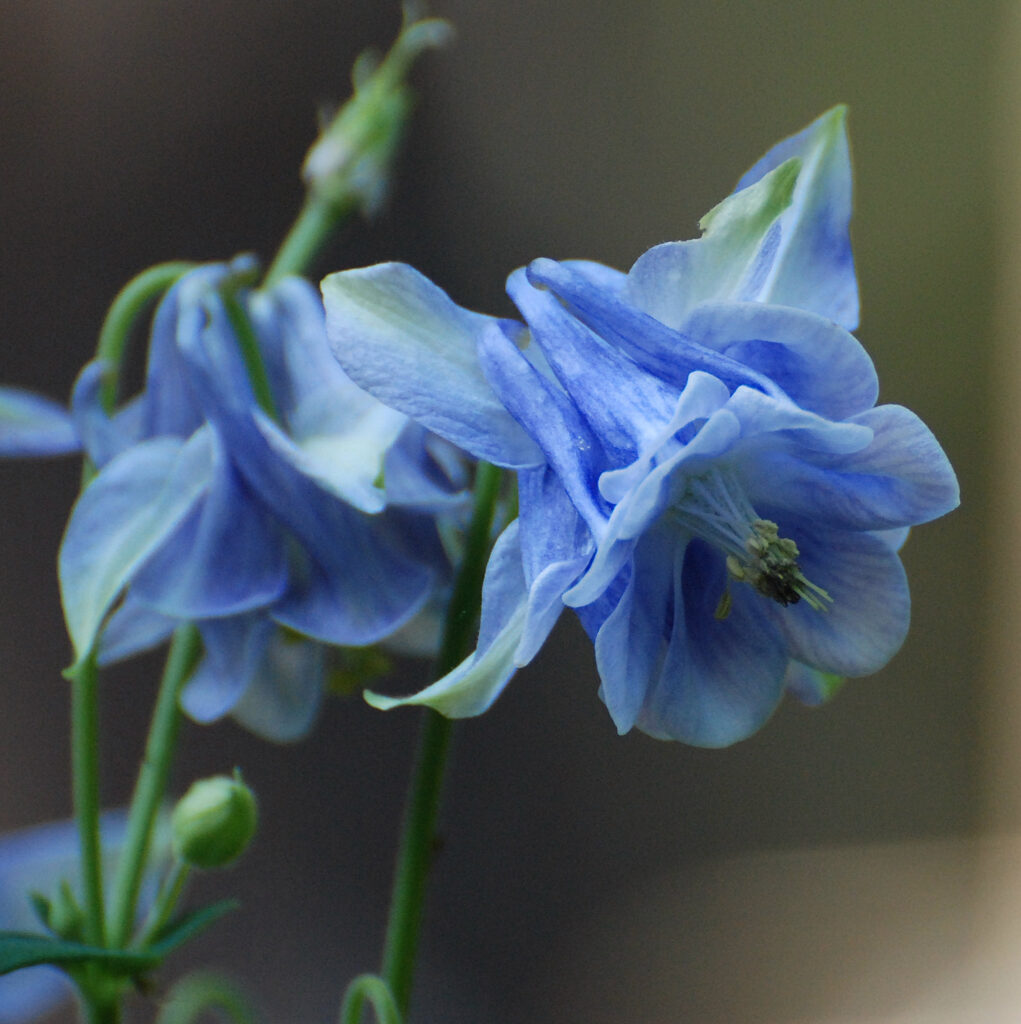
Also known as granny’s bonnet, columbine is a genus of around 70 flowering plants that are distributed across the Northern Hemisphere.
They are most commonly known for growing in meadows and open woodlands, usually marking the beginning of springtime thanks to their early bloom.
Columbine flowers are dark blue with dark green foliage that turns burgundy in autumn.
These flowers are often visited by hummingbirds and butterflies for the bell-shaped flowers. They typically prefer to grow in milder climates in partial shade and well-drained soil.
9. Himalayan Poppy (Meconopsis)
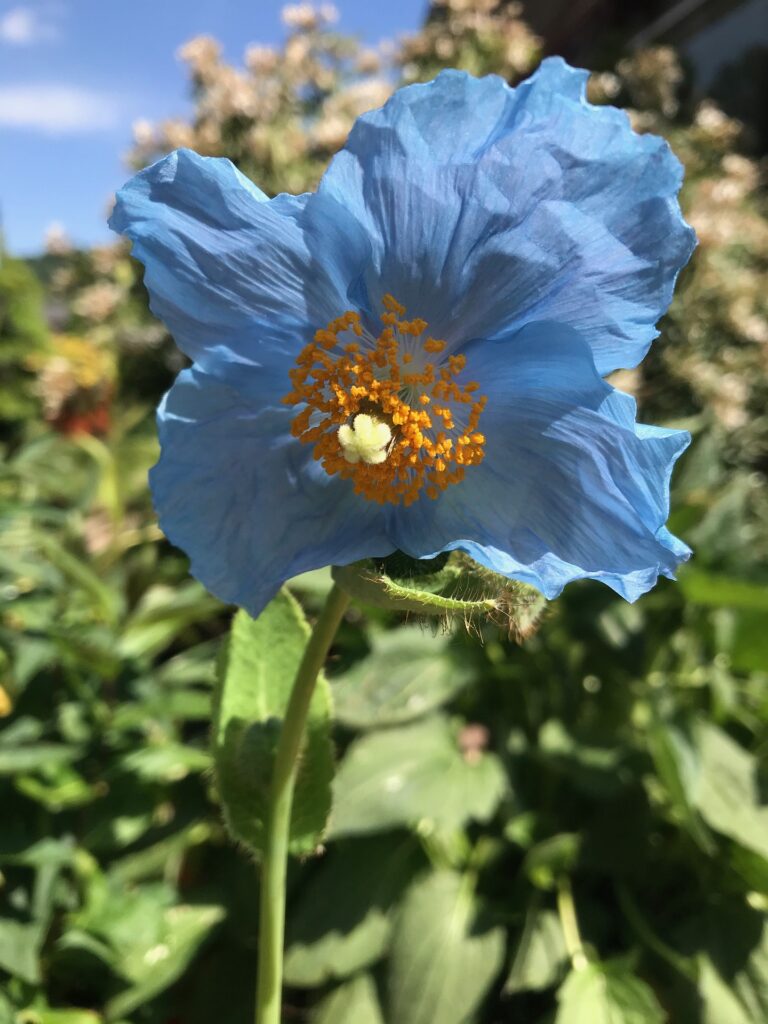
For those wanting a lighter cyan flower, check out Himalayan poppies. The Himalayan poppy features around 4 large and rounded light blue petals, which can often come in a slightly darker variety.
As the species and taxonomy are largely unknown still, these flowers are notoriously hard to find and can often be tricky to grow.
If you’ve ever tried growing a Himalayan poppy from a seed, you’ve probably witnessed how temperamental the flower can be.
The flower’s native habitat is Tibet, after all, which is a climate hard to replicate in gardens.
10. Brunnera
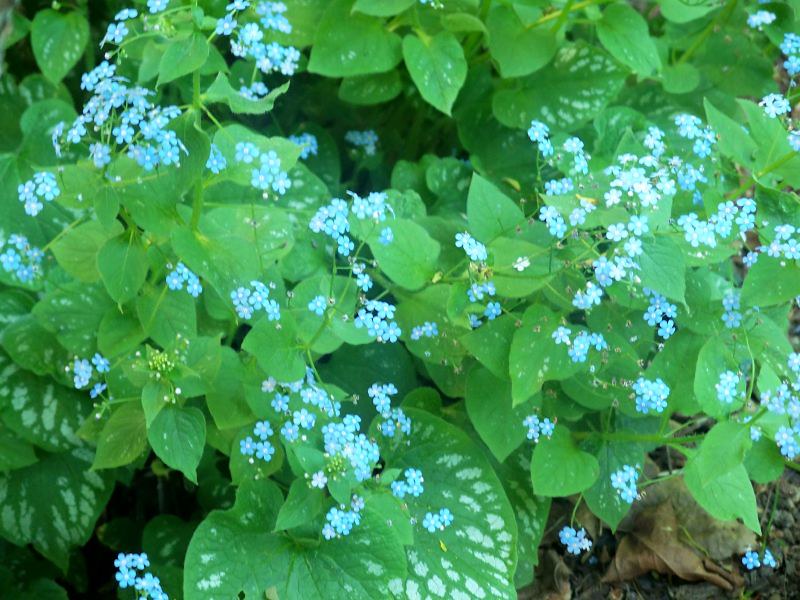
Native to woodlands in Europe and Asia, brunnera is a genus of blue flowering plants that typically bloom at the start of spring.
These flowers are low growers that consist of large, hair variegated leaves and small light blue flowers, with the mixture of blue and green giving the impression of cyan.
Brunnera are great plants to grow for those with small or shaded gardens as they are very shade tolerant. They prefer to grow in the full shade amongst moist and well-drained soil.
They naturally appear near water sources like rivers and streams, so they don’t do well in dry conditions.
11. Blue Delphiniums
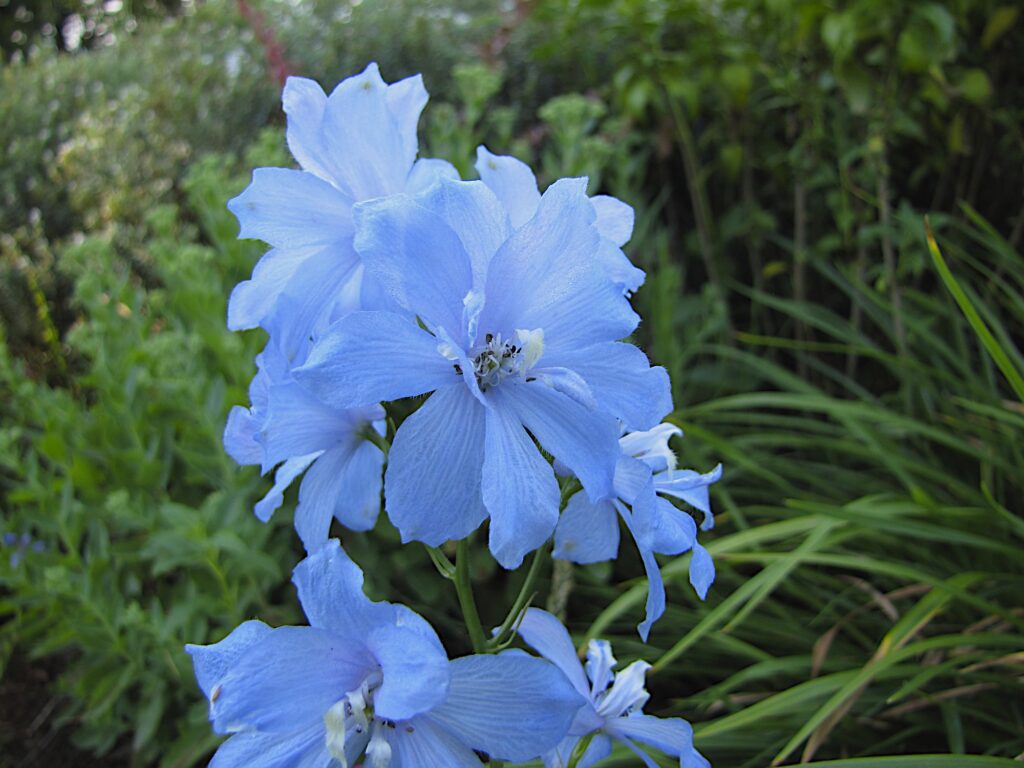
There are around 300 species of delphiniums, meaning there is a wide variety of delphinium colors available. The blue variety is most ideal for those wanting to find a cyan flower.
These hardy perennials can grow anywhere from 10 centimeters to 2 meters depending on the species, each with a topping of floral spires.
Not only are blue delphiniums great for adding some height to a garden, but they also look beautiful in floral arrangements.
Taller varieties will need staking to prevent falling over, and delphiniums like to grow in partial shade and sun in well-drained soil.
12. Grape Hyacinth (Muscari)
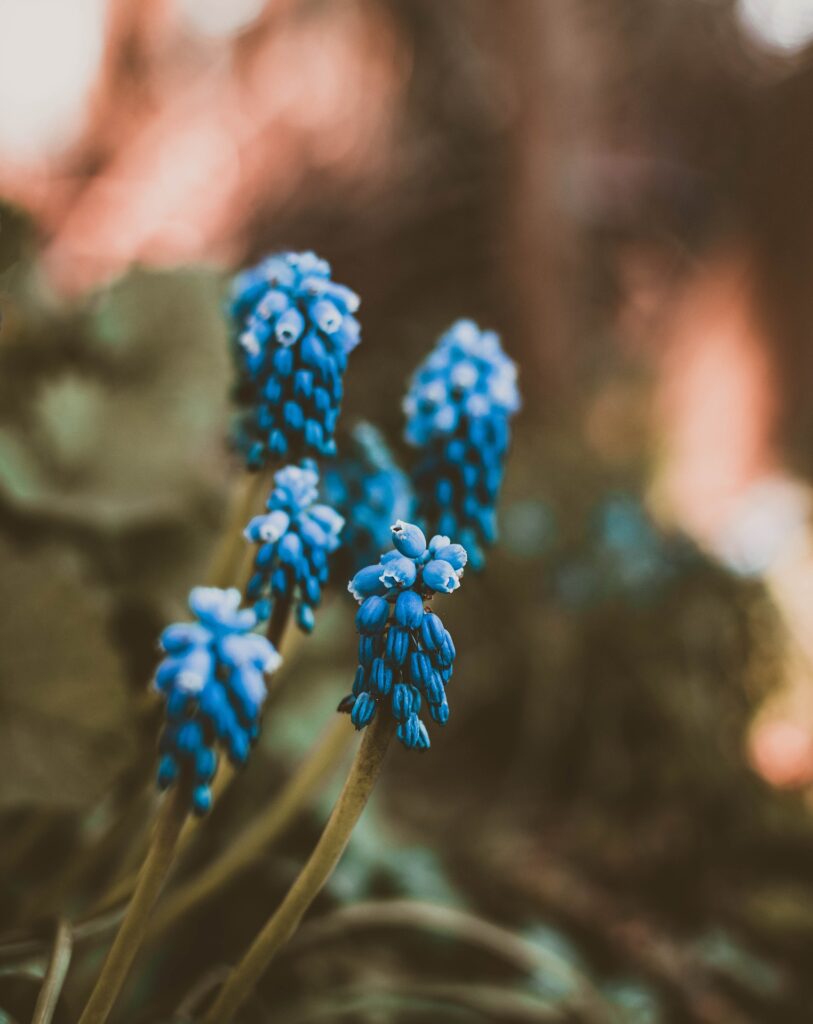
Grape hyacinths are native to Eurasia, though, despite their name, they should not be mistaken for hyacinths.
These are perennial bulbous plants that consist of tall stalks and grape-shaped blue bulbs.
Before opening into drooping bell-shaped bulbs, the bulbs appear somewhat green, creating the illusion of a cyan flower.
Grape hyacinths pair most beautifully with yellow flowers thanks to the complimentary blue shade. They like to grow in full sun or partial shade in well-drained soil.
13. Morning Glory
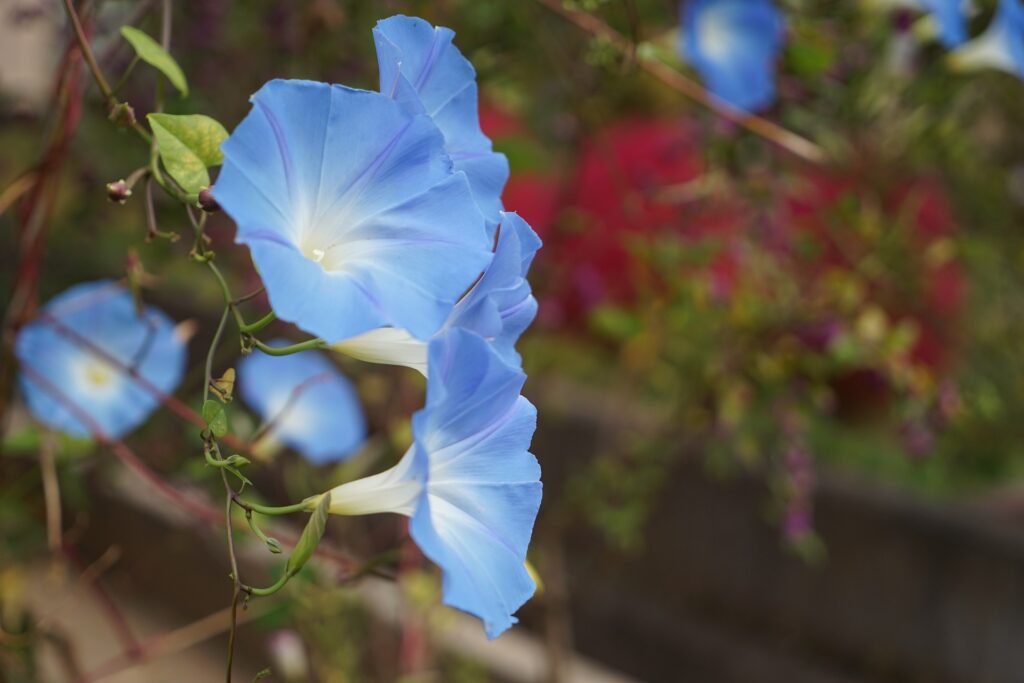
Also known as the blue dawn flower, morning glory flowers are most well known for their ability to open into a saucer-shaped blossom in the morning before closing again in the evening.
While they come in various colors, such as white and pink, the blue version is closest to the cyan color.
Morning glory flowers actually have a fairly short lifespan, which is why they are grown as a treasured ornamental plant. They require lots of direct sunlight and well-drained soil to thrive.
14. Globe Thistle (Echinops)
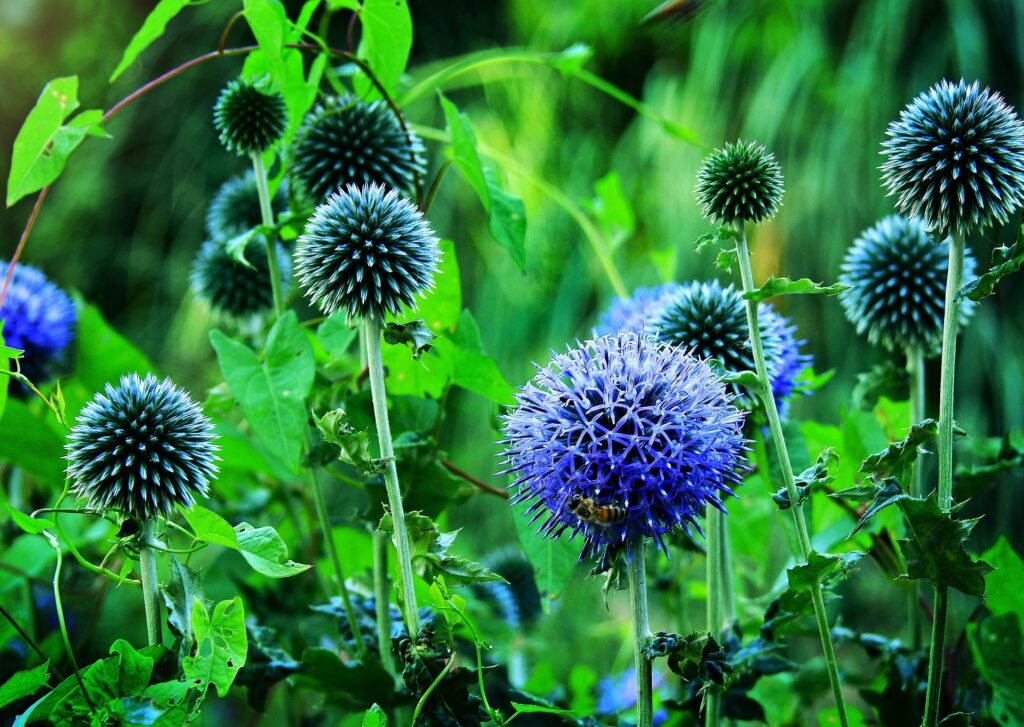
Globe thistles are a genus of around 120 flowering plants that are known for their unique spherical and thorny appearance.
These flowers are native across Europe and parts of Africa and Asia. The bulk of the flower underneath is typically green, which then blends with the spiky blue petals to create a cyan appearance.
Globe thistles are an excellent addition to a garden to provide some dimension and height. They prefer full sunlight and some partial shade along with well-drained soil.
15. Anemone
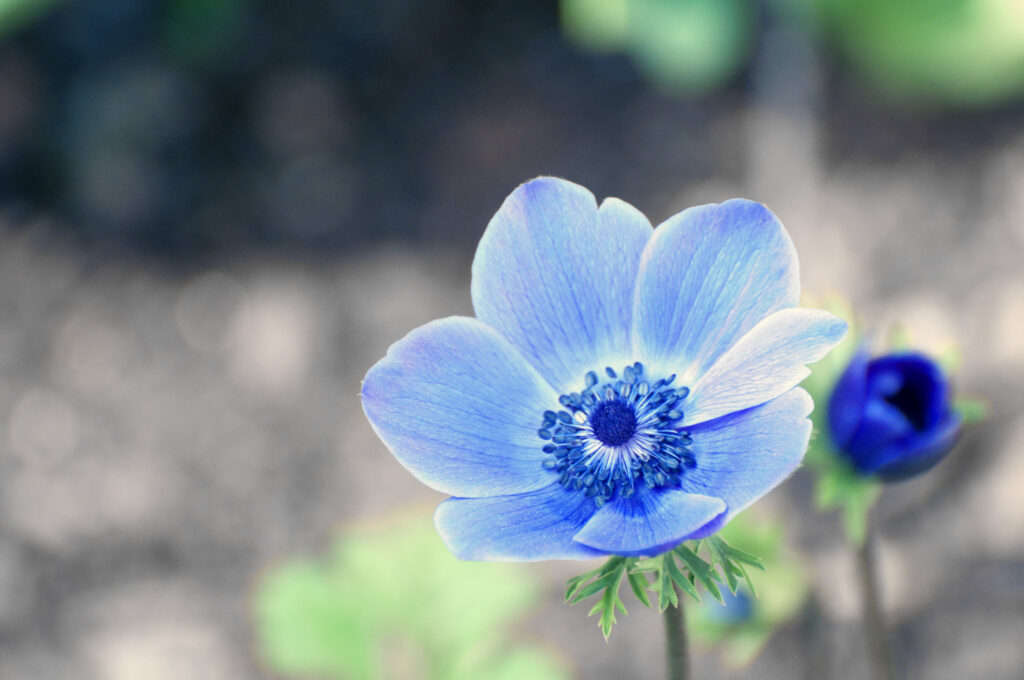
Anemone is a genus belonging to the buttercup family, with some species being known as windflowers.
These flowers come in a variety of rich colors, but the blue variety is particularly vibrant.
Anemones are known to bloom throughout the year except for winter, making them a magnificent permanent addition to a garden.
Not only do they bloom in abundance when one takes care of it properly (up to 20 flowers per bulb). Bu,t blue anemones are a symbol of luck and peacefulness.
Conclusion
So, there you have it! While it’s clear that there technically aren’t any cyan flowers, there are countless blue flower species that offer tones of cyan or can appear cyan when blended against a green backdrop.
Cyan and blue flowers are a beautiful way to enhance your garden or floral arrangement, which explains why people widely seeks after them.
We hope you learned something from this article, here are other articles that you can learn from:
32 Gorgeous Jordanian Flowers (With Pictures)







